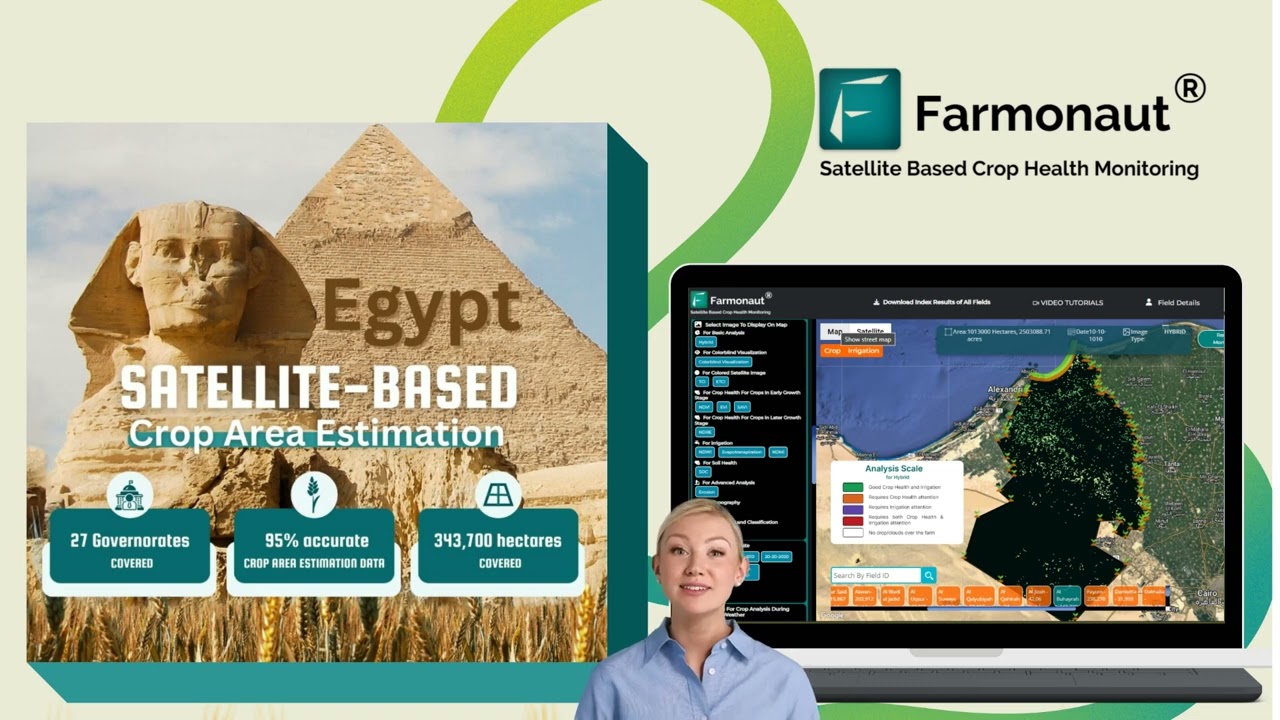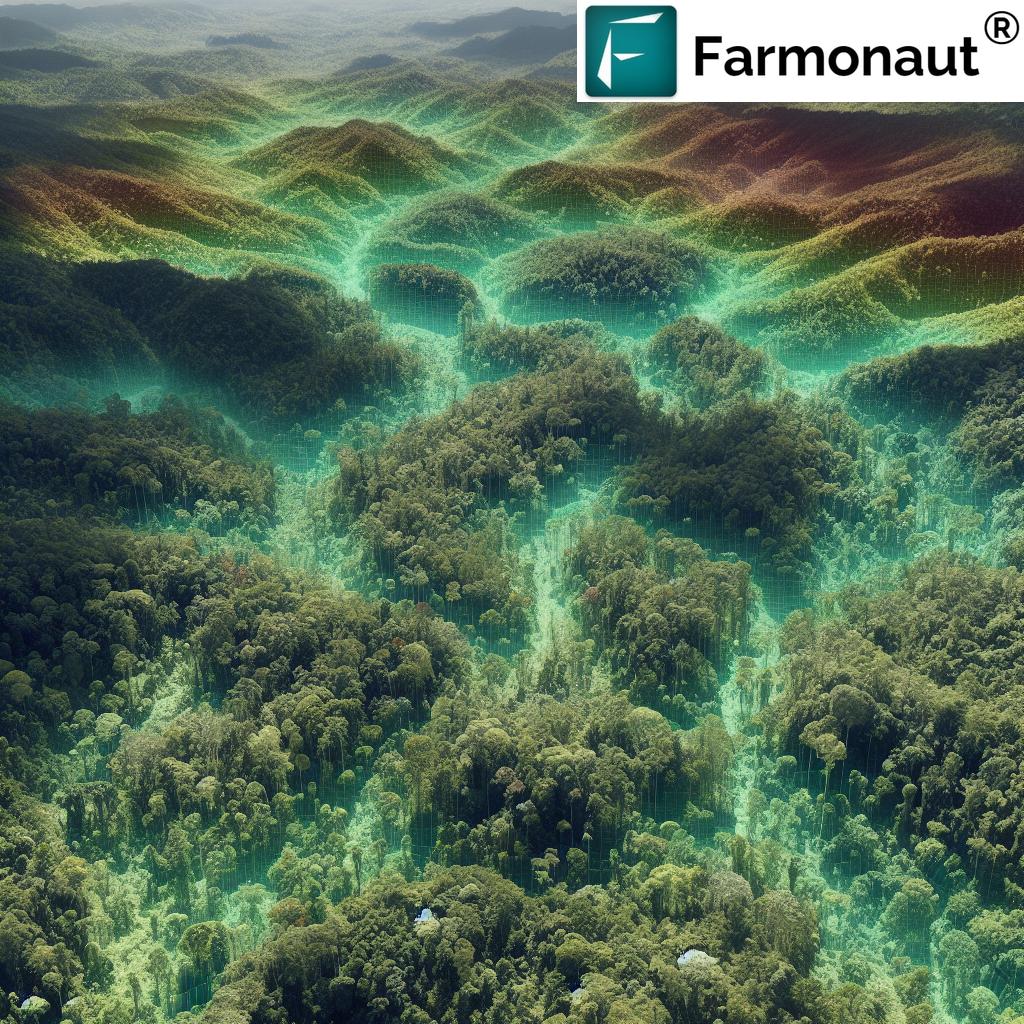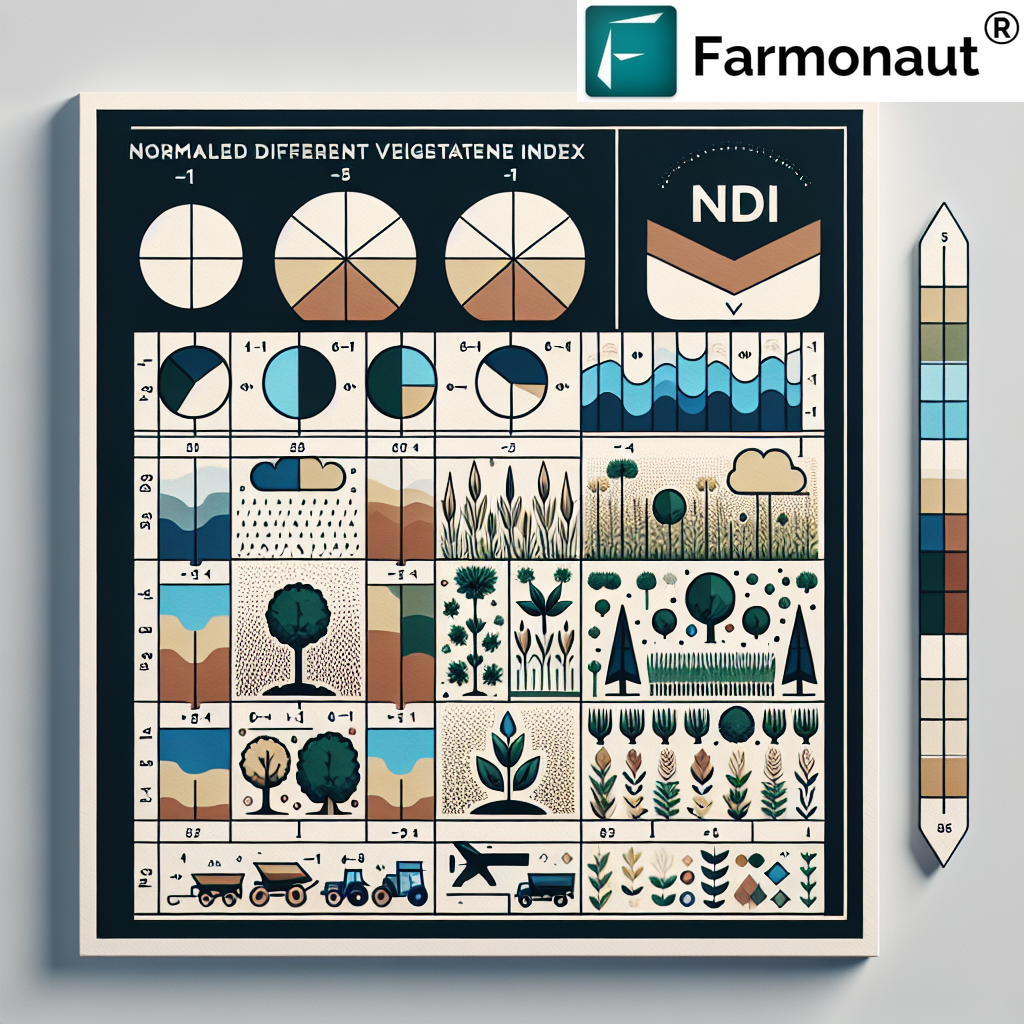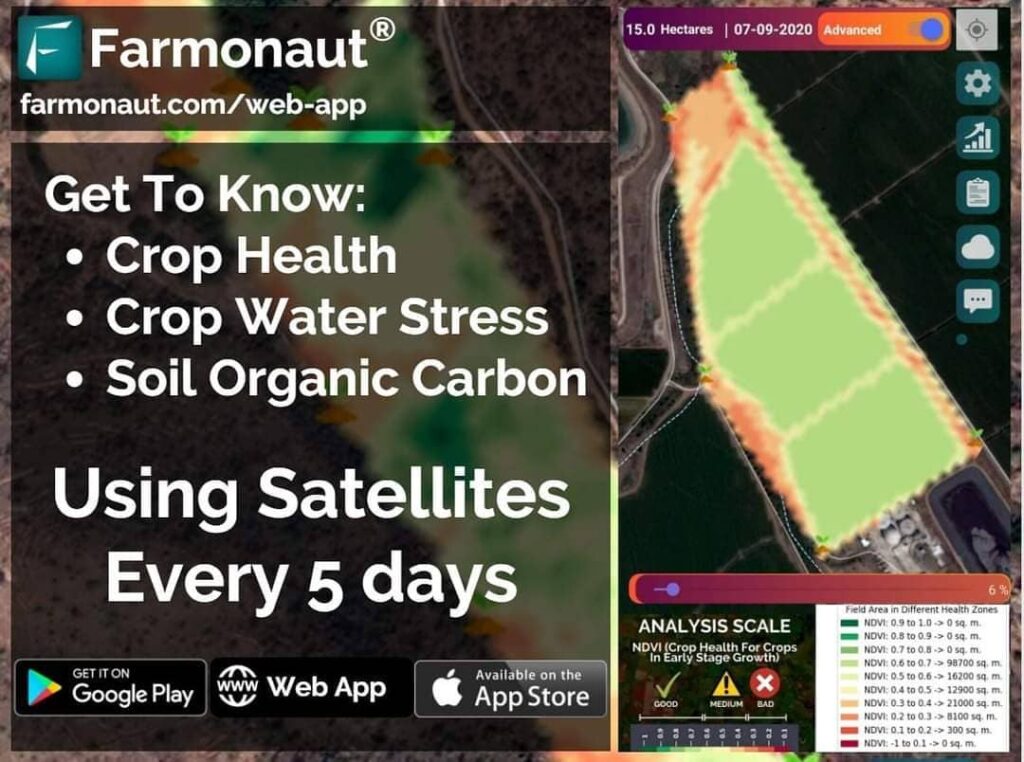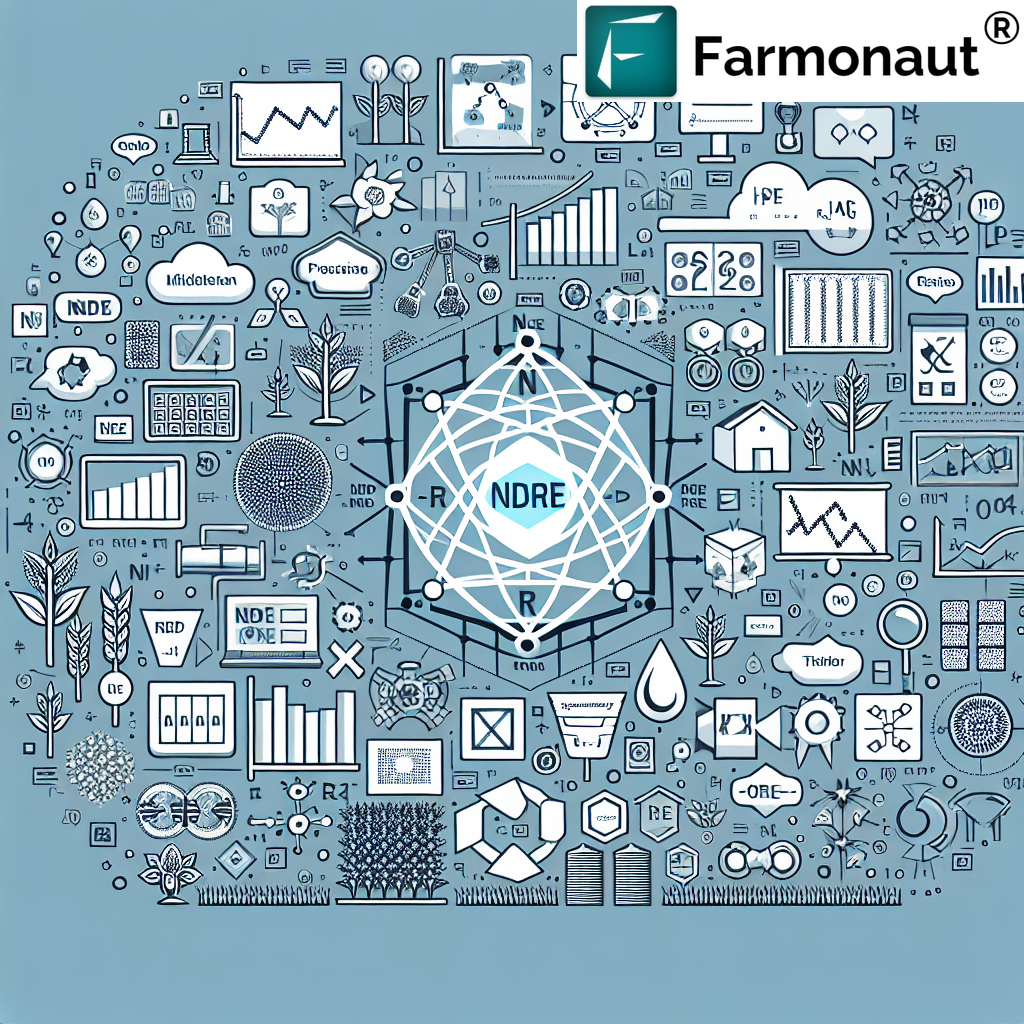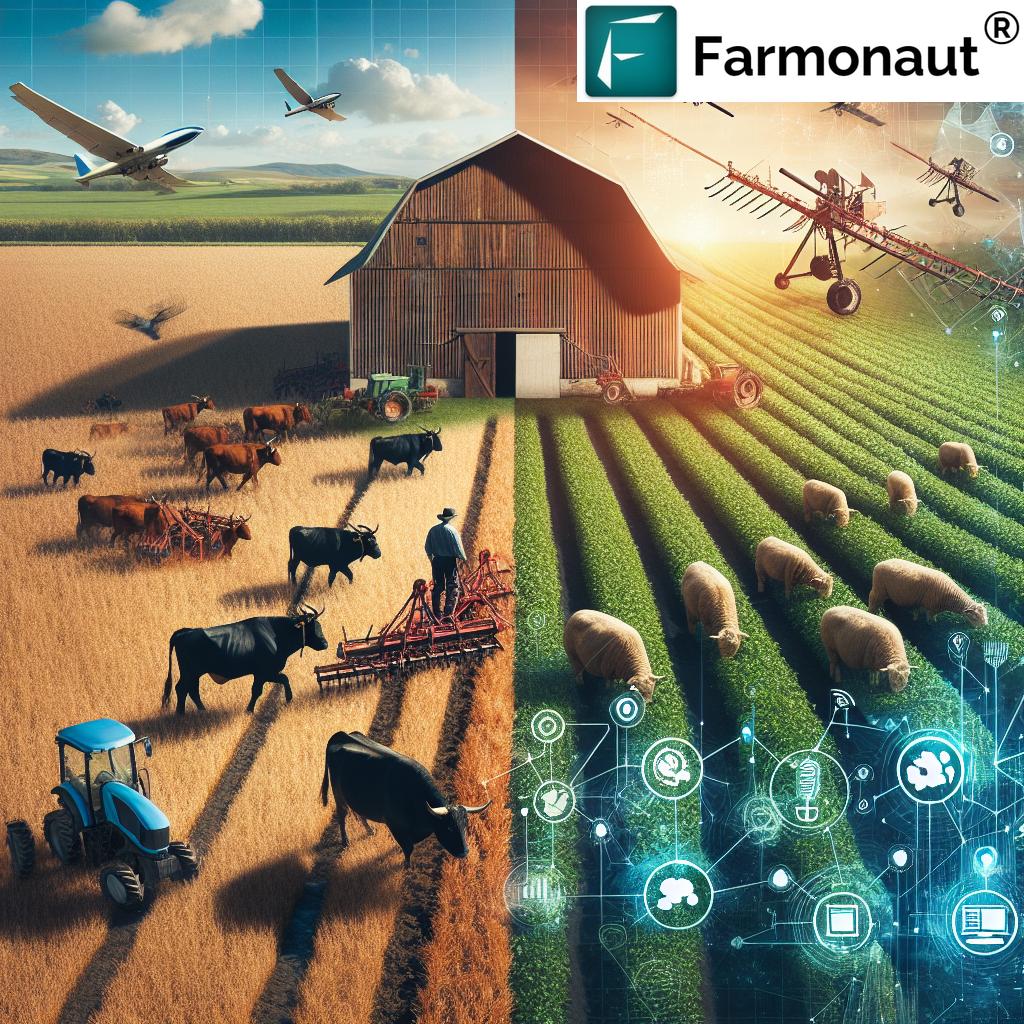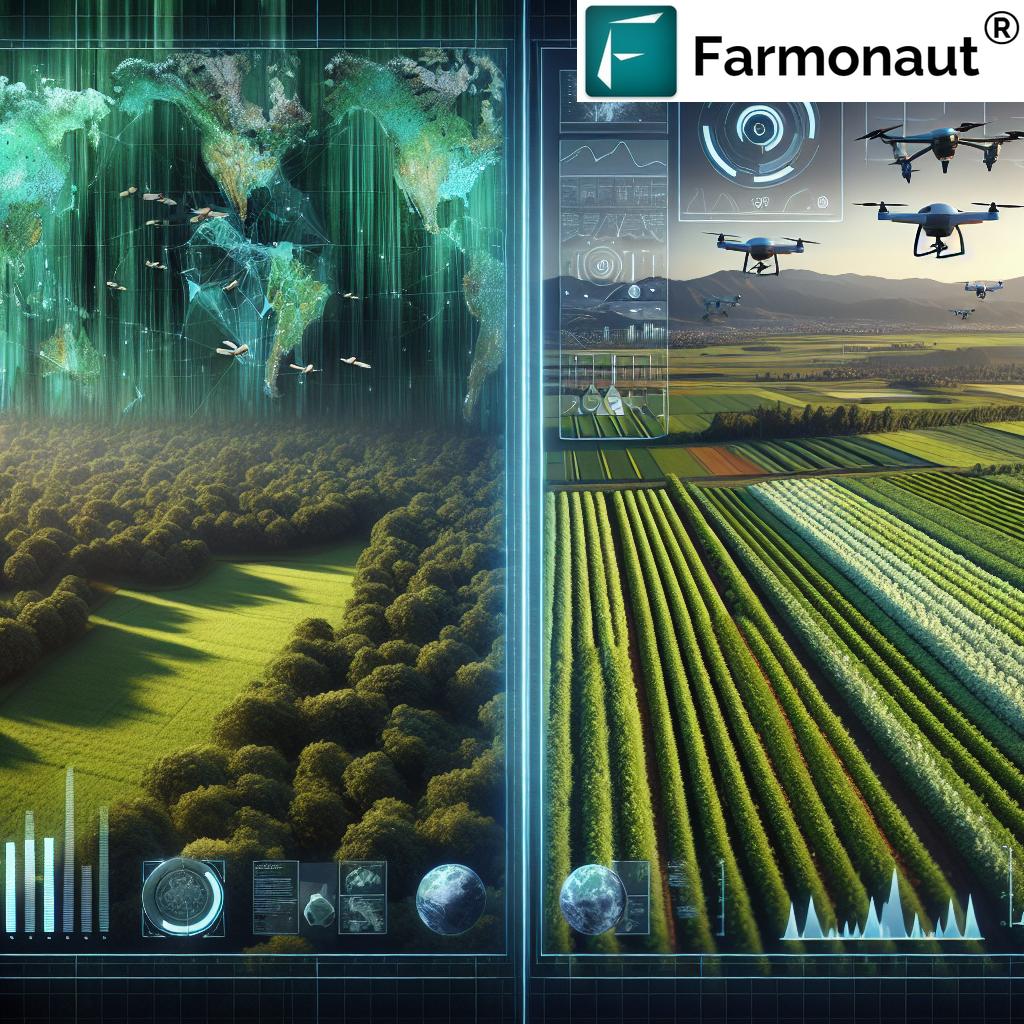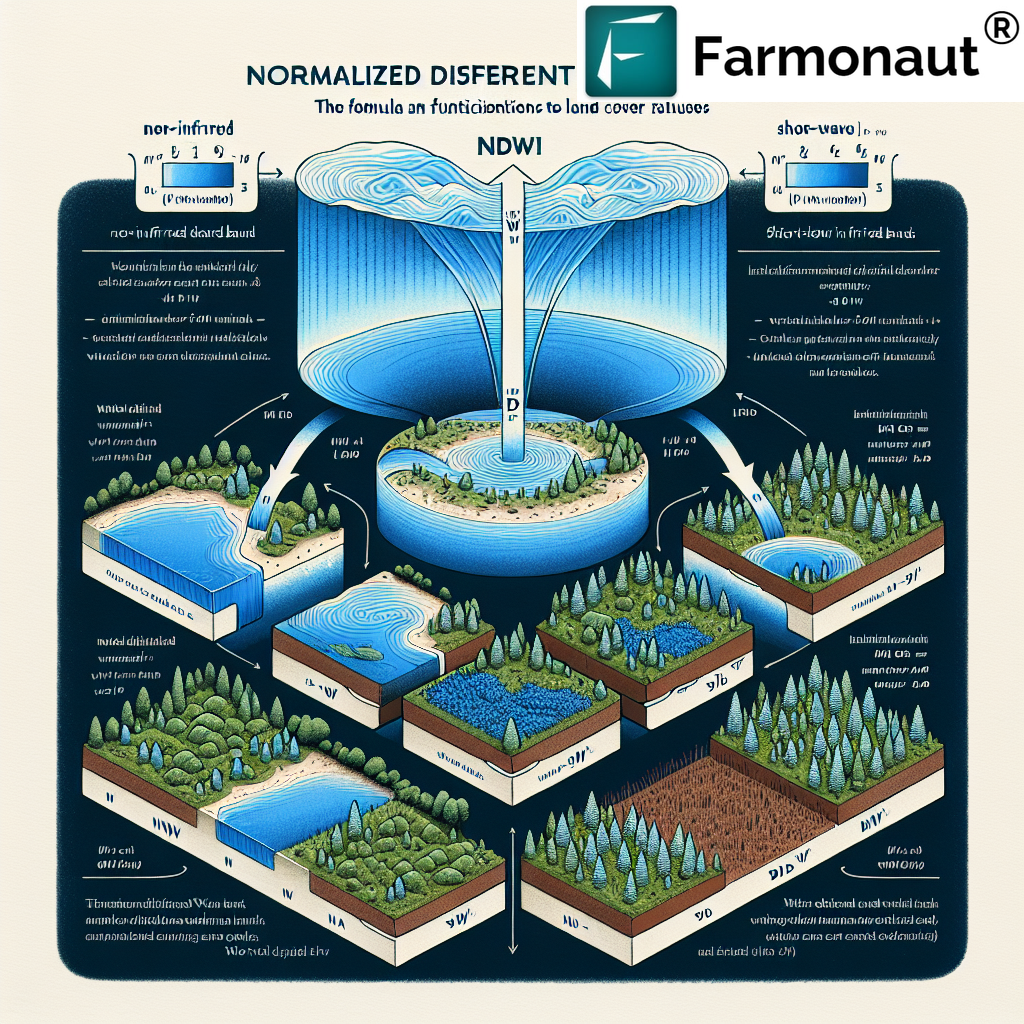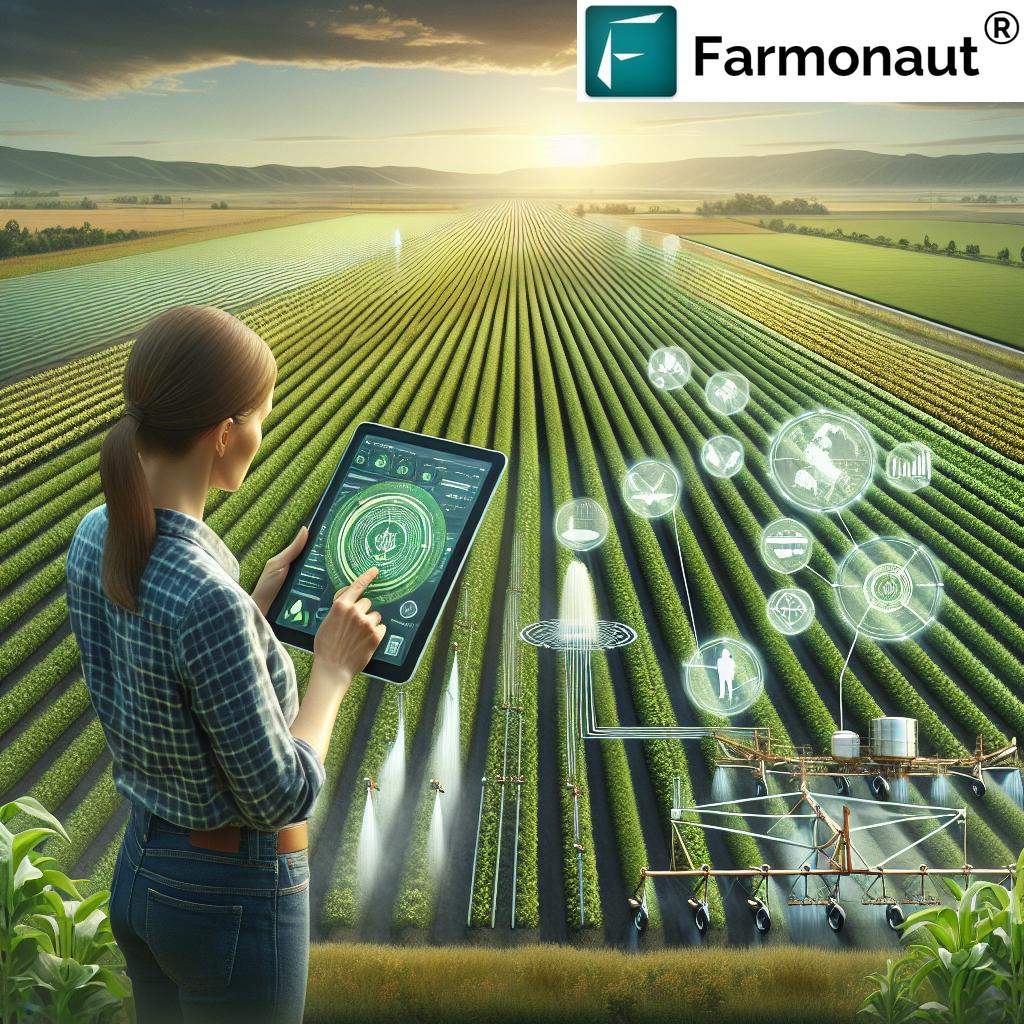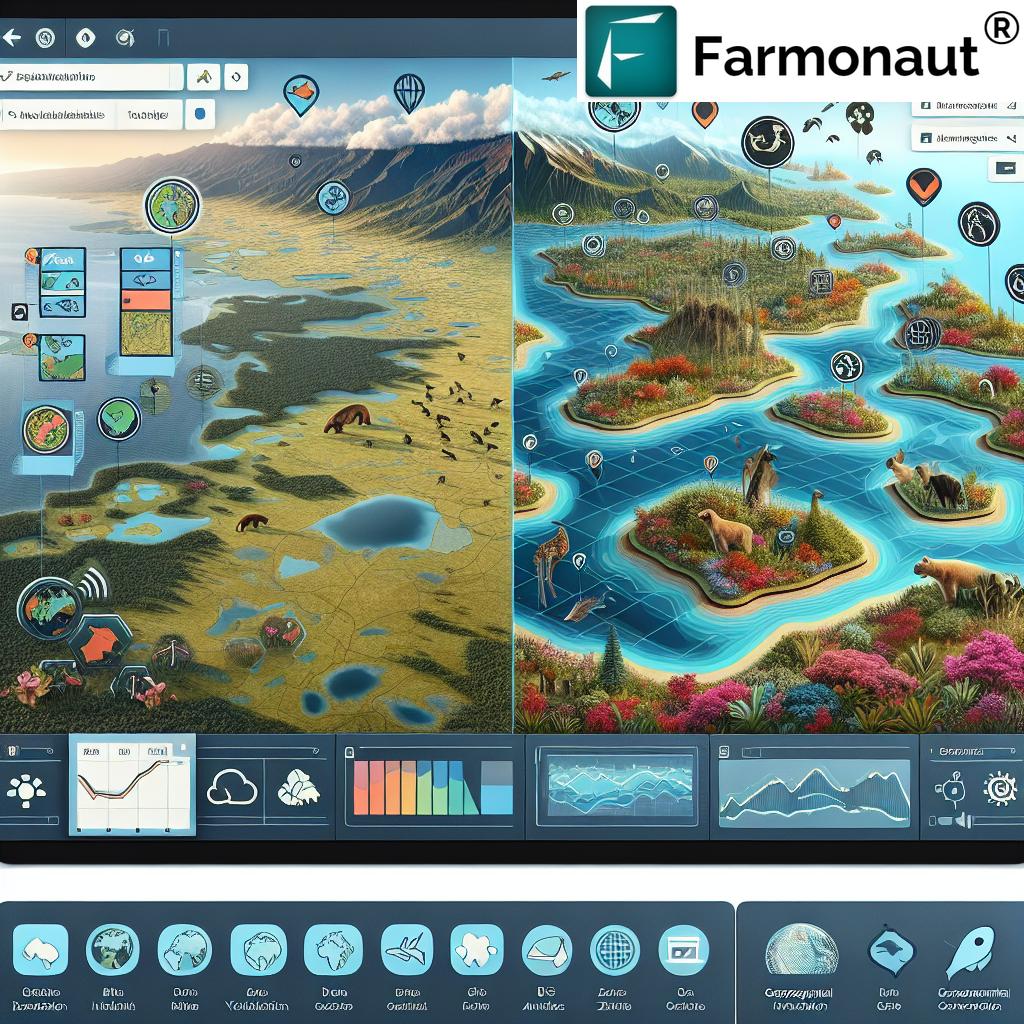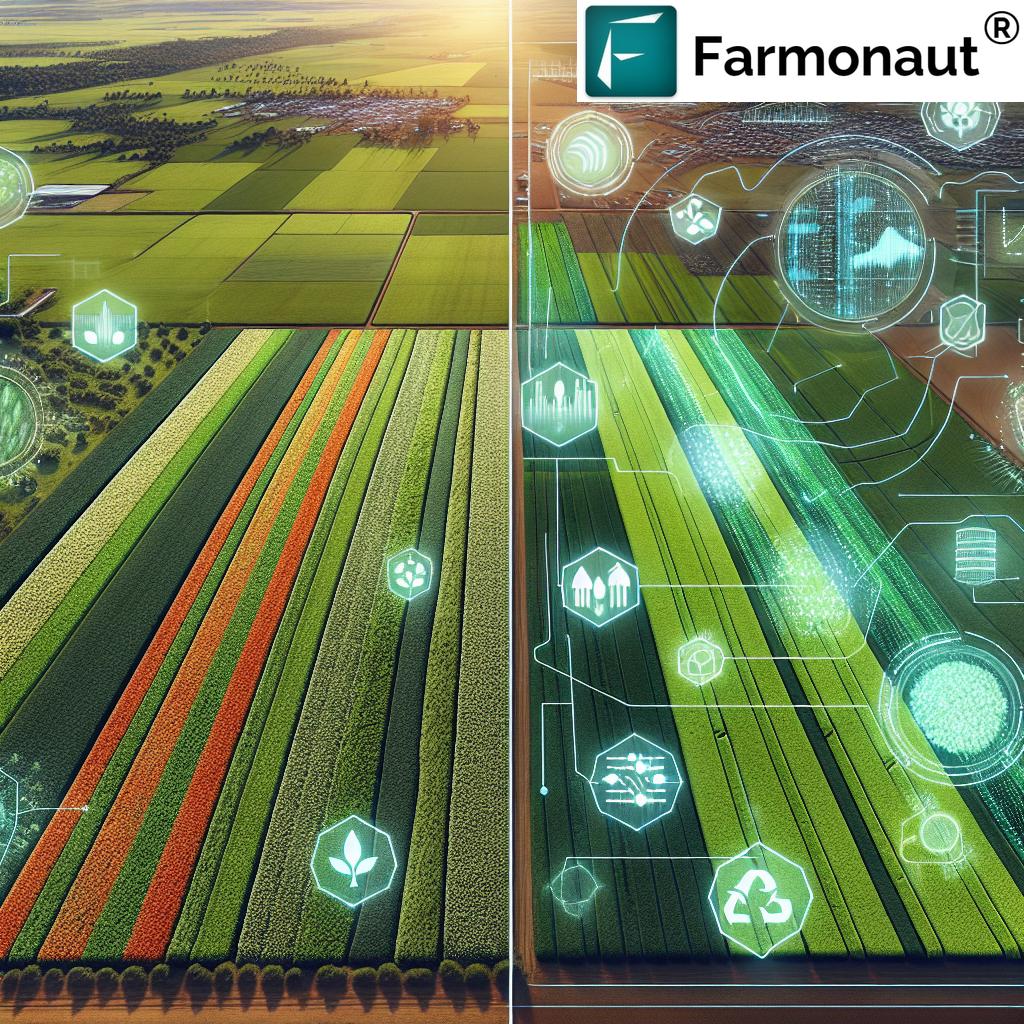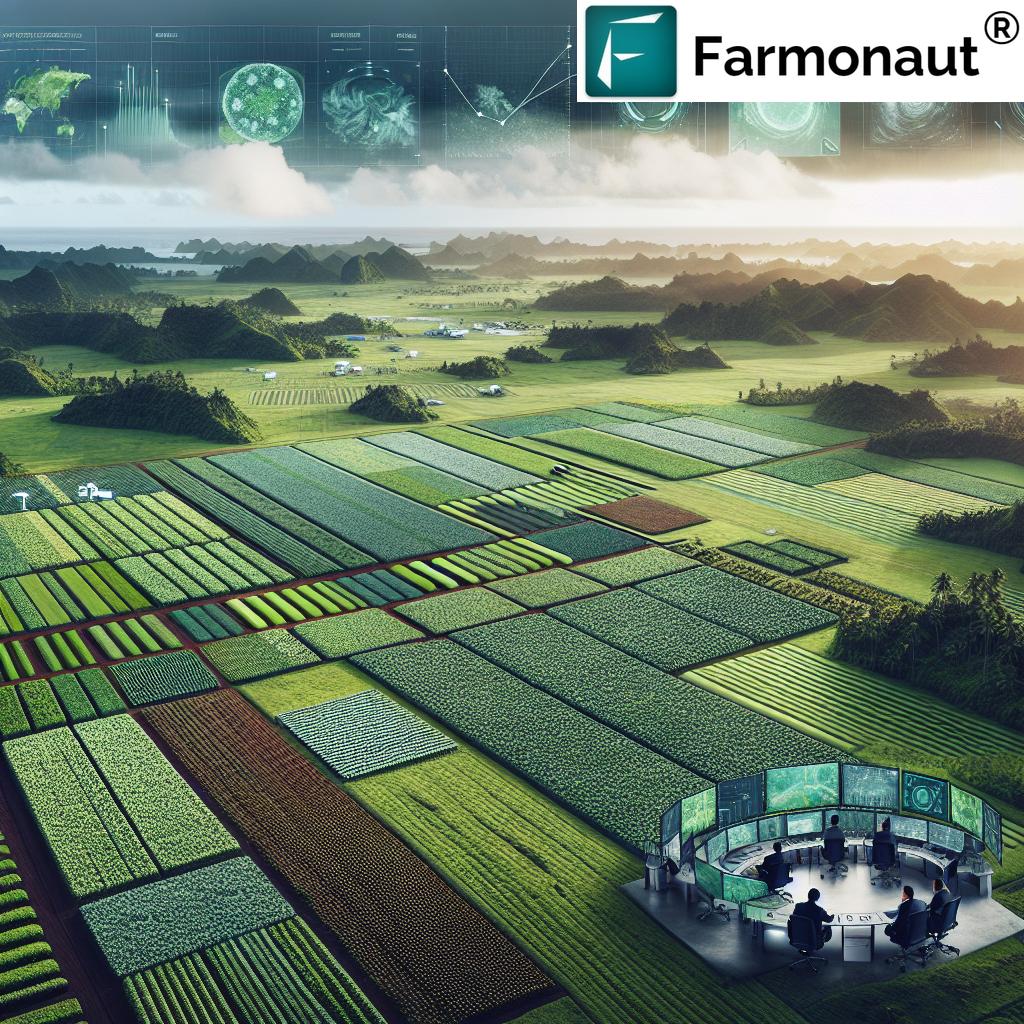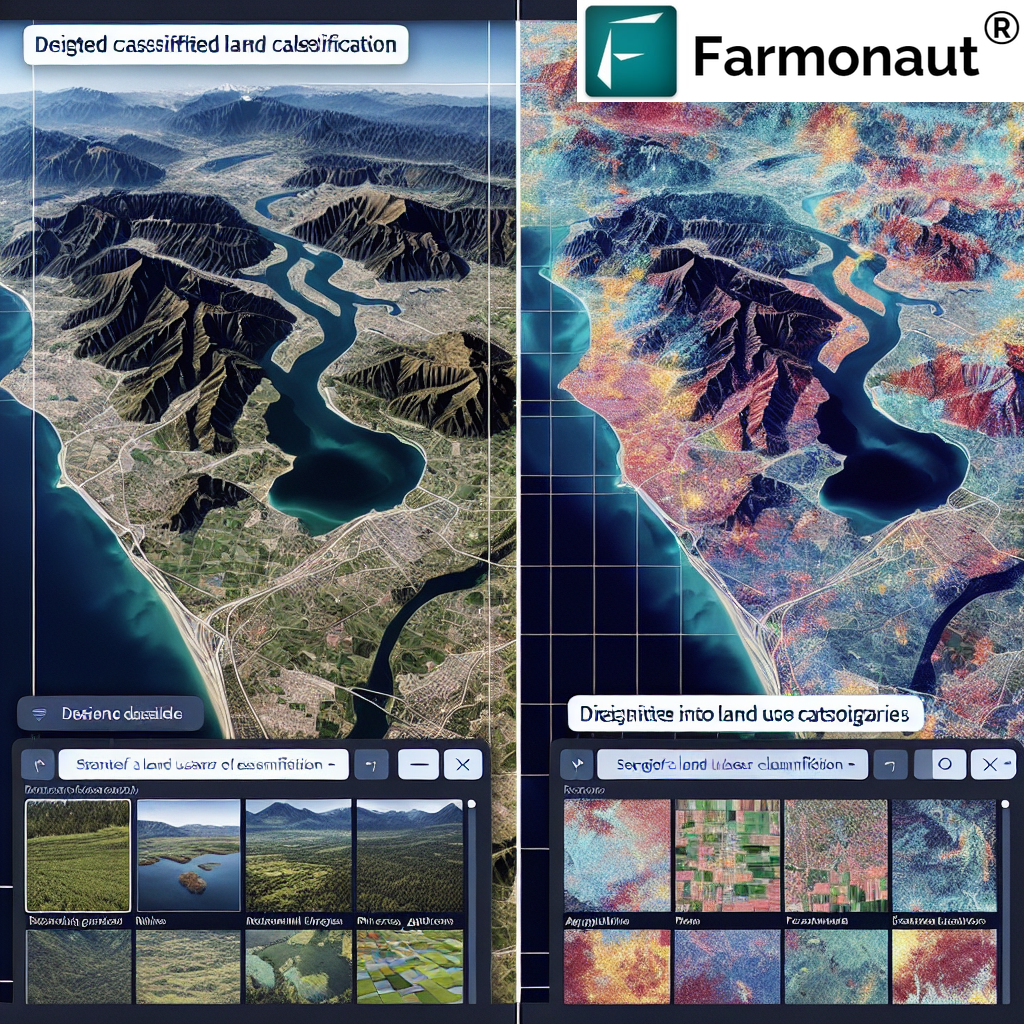Global Wine Industry Trends 2024: Navigating Challenges in Production and Consumption
“Global wine production in 2023 hit its lowest point since 1961, impacting major producing countries worldwide.”
Welcome to our comprehensive analysis of the global wine industry trends for 2024. As we delve into the intricate world of vineyards, harvests, and markets, we’ll explore the unprecedented challenges faced by the wine sector and the innovative solutions emerging to navigate these turbulent times.
The State of Global Wine Production
The Global Wine Supply Monitor has revealed critical insights into wine production and export markets in 2023, painting a picture of an industry grappling with significant hurdles. Let’s uncork the details:
- Global wine production hit a historic low, not seen since 1961
- Major producing countries faced climate impacts, diseases, and adverse weather conditions
- Australia experienced its lowest vintage in two decades
- European nations reported varied yields, reflecting regional disparities
These challenges underscore the need for innovative approaches to vineyard management and sustainability. At Farmonaut, we recognize the importance of leveraging technology to support the wine industry in these trying times.

Climate Change: The Vintage Villain
Climate change has emerged as the most formidable adversary for winegrowers worldwide. The 2023 vintage tells a tale of struggle against nature’s whims:
- Extreme weather events disrupted growing seasons across continents
- Unprecedented heatwaves in Europe led to early harvests and altered grape compositions
- Drought conditions in parts of Australia and California stressed vines and reduced yields
- Unexpected frost events in traditionally warmer regions damaged buds and young shoots
These climate-related challenges are not just temporary setbacks but signal a long-term shift that the industry must adapt to. Sustainable winegrowing practices and digital monitoring solutions are becoming essential tools in the vintner’s arsenal.
Technological Solutions for Vineyard Management
In response to these challenges, the wine industry is increasingly turning to technological solutions. At Farmonaut, we’re at the forefront of this digital revolution in agriculture, offering cutting-edge tools for vineyard management:
- Satellite-based crop health monitoring for precise vineyard assessment
- AI-driven advisory systems for optimized grape growing strategies
- GIS applications for detailed mapping and analysis of vineyard terroir
- Digital solutions for resource management and sustainability tracking
Our platform provides vineyard managers with real-time insights, enabling them to make data-driven decisions that can mitigate the impacts of climate variability.
Explore our web app or download our mobile apps:
Shifting Consumption Patterns
The Global Wine Supply Monitor not only highlights production challenges but also unveils changing consumption patterns that are reshaping the market landscape:
- Declining demand in China, a once-booming market for wine consumption
- Global economic factors impacting purchasing power in major markets
- Shift towards premium and organic wines in developed markets
- Rising interest in low-alcohol and alcohol-free wine alternatives
These trends are forcing wineries to rethink their marketing strategies and product offerings to align with evolving consumer preferences.
Export Market Analysis
The global wine export market is experiencing significant turbulence due to the production shortfalls and changing consumption patterns. Key observations include:
- Reduced export volumes from major producing countries
- Price volatility due to supply constraints and quality variations
- Shifting trade dynamics influenced by geopolitical factors and trade agreements
- Emerging markets in Asia and Eastern Europe gaining prominence
For exporters, these challenges necessitate a strategic approach to market diversification and supply chain management. Farmonaut’s blockchain-based traceability solutions can provide the transparency and integrity needed to navigate these complex market dynamics.
Sustainable Winegrowing Practices
As the industry grapples with environmental challenges, sustainable winegrowing practices are moving from niche to necessity. Key focus areas include:
- Water conservation techniques and efficient irrigation systems
- Organic and biodynamic farming methods to reduce chemical inputs
- Carbon footprint reduction strategies across the wine production chain
- Biodiversity promotion in and around vineyards
Our digital monitoring solutions at Farmonaut support these initiatives by providing precise data on resource usage and environmental impacts, enabling winegrowers to make sustainable choices.
“Australia’s wine industry faced its lowest vintage in two decades, highlighting severe climate-related challenges in 2023.”
Regional Spotlight: Australia’s Wine Sector
Australia’s wine industry, known for its resilience, faced unprecedented challenges in 2023:
- Two-decade low vintage due to adverse weather conditions
- Reduced export volumes, particularly to China, a key market
- Adaptation strategies focusing on alternative varietals and terroir exploration
- Increased investment in research and development for climate-resilient viticulture
The Australian experience serves as a case study for the global industry on adapting to climate change and market shifts. Farmonaut’s satellite-based monitoring can play a crucial role in helping Australian vineyards adapt to these changing conditions.
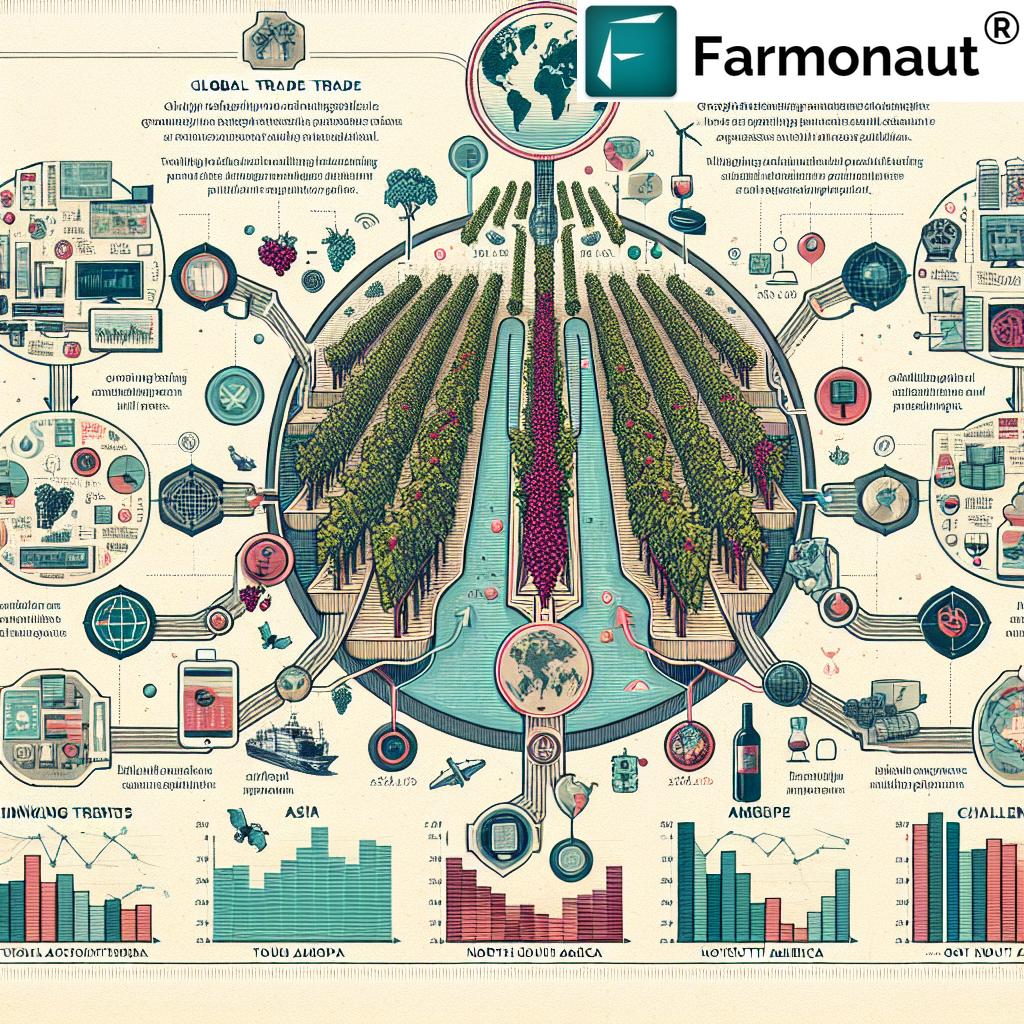
Innovation in Winemaking
In response to the challenges, the wine industry is seeing a surge of innovation in winemaking techniques:
- Precision fermentation methods for consistent quality despite variable grape conditions
- Use of AI and machine learning for optimized blending and aging processes
- Development of drought-resistant and disease-tolerant grape varieties
- Exploration of alternative packaging solutions to reduce environmental impact
These innovations are not just about maintaining production levels; they’re about reimagining the future of wine in a changing world.
The Role of GIS in Modern Viticulture
Geographical Information Systems (GIS) are revolutionizing vineyard management and wine production. At Farmonaut, we leverage GIS technology to provide:
- Detailed mapping of vineyard terroir and microclimates
- Analysis of soil composition and drainage patterns
- Monitoring of vine health and stress levels across large areas
- Precision agriculture techniques for optimized resource allocation
By integrating GIS data with our satellite imagery and AI analytics, we offer winegrowers unprecedented insights into their vineyards, enabling data-driven decision-making at every stage of production.
For developers interested in integrating these capabilities, check out our API and API Developer Docs.
Wine Tourism and Direct-to-Consumer Sales
As traditional sales channels face disruption, the wine industry is increasingly focusing on wine tourism and direct-to-consumer (DTC) sales:
- Virtual wine tasting experiences gaining popularity
- Enhanced cellar door experiences with augmented reality and interactive technologies
- Growth of wine clubs and subscription models
- Integration of e-commerce solutions with vineyard experiences
These trends are creating new revenue streams and building stronger connections between wineries and consumers.
Global Wine Production and Consumption Trends 2023-2024
| Country/Region | 2023 Production (est. million hectoliters) | 2024 Production Forecast (est. million hectoliters) | Consumption Trend |
|---|---|---|---|
| France | 45.0 | 47.5 | ↓ Slight decrease |
| Italy | 43.9 | 46.0 | → Stable |
| Spain | 33.7 | 35.0 | ↑ Moderate increase |
| Australia | 10.5 | 12.0 | ↓ Significant decrease |
| United States | 22.1 | 23.5 | → Stable |
| Europe (Total) | 156.0 | 162.0 | ↓ Slight decrease |
| Americas (Total) | 48.5 | 50.0 | ↑ Moderate increase |
Future Outlook: Navigating Uncertainties
As we look towards 2024 and beyond, the wine industry faces a complex landscape of challenges and opportunities:
- Continued climate variability requiring adaptive strategies
- Evolving consumer preferences driving product innovation
- Increasing focus on sustainability and environmental stewardship
- Technological integration reshaping traditional practices
The industry’s resilience will be tested as it adapts to these changing dynamics. At Farmonaut, we’re committed to supporting this transition with our advanced monitoring and management solutions.
Conclusion: A Toast to Resilience and Innovation
The global wine industry stands at a crossroads, facing unprecedented challenges in production and consumption. However, with challenges come opportunities for innovation and growth. As we’ve explored in this analysis, the sector is responding with remarkable resilience, embracing new technologies, sustainable practices, and market strategies.
At Farmonaut, we’re proud to be part of this transformative journey, offering cutting-edge solutions that empower winegrowers to navigate these turbulent times. From our satellite-based monitoring to AI-driven insights, we’re committed to supporting the industry’s sustainable future.
As we raise a glass to the vintners, growers, and innovators shaping the future of wine, we remain optimistic about the industry’s ability to adapt, evolve, and thrive in the face of global challenges.
FAQ Section
Q: How is climate change affecting wine production globally?
A: Climate change is causing extreme weather events, altering growing seasons, and affecting grape quality and yield. This has led to historic low production in some regions and is forcing the industry to adapt with new grape varieties and cultivation techniques.
Q: What role does technology play in modern vineyard management?
A: Technology, including satellite imagery, AI, and GIS, is crucial for precise vineyard monitoring, resource management, and decision-making. It helps vintners optimize production, manage climate risks, and improve sustainability.
Q: How are wine consumption patterns changing?
A: Global consumption patterns are shifting, with declining demand in some traditional markets like China, increased interest in premium and organic wines, and a growing market for low-alcohol alternatives.
Q: What are some key sustainable practices in winemaking?
A: Sustainable practices include water conservation, organic farming methods, carbon footprint reduction, and biodiversity promotion. Many wineries are also exploring alternative packaging and energy-efficient production methods.
Q: How is the Australian wine industry adapting to recent challenges?
A: Australia’s wine industry is focusing on research into climate-resilient viticulture, exploring new grape varieties, and investing in technology for better vineyard management. They’re also diversifying export markets in response to changing global demand.





